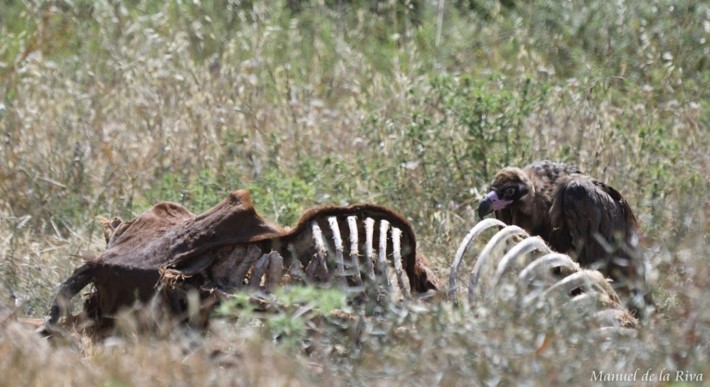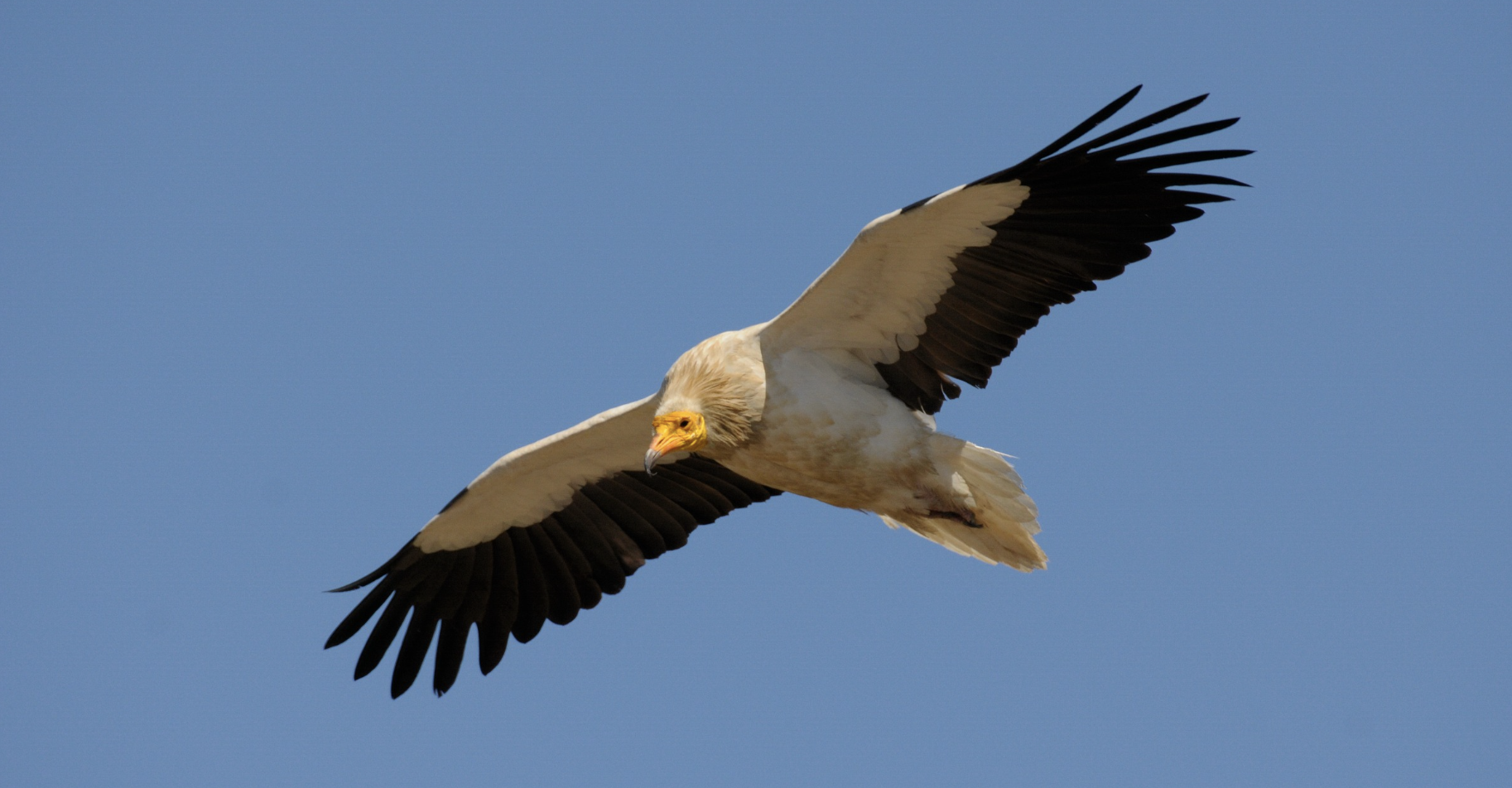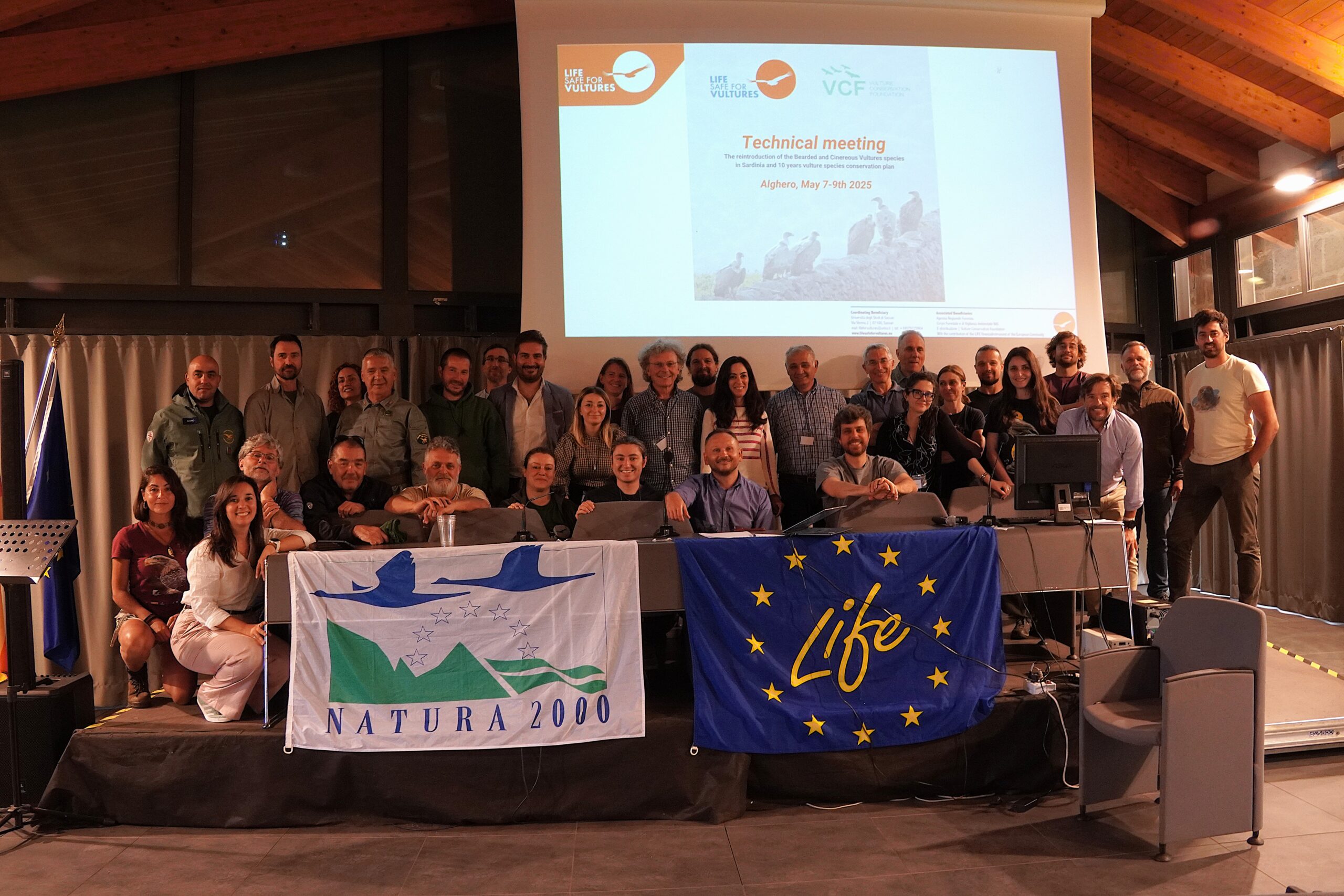
At the end of March all five Egyptian Vultures tagged with a GPS transmitter as part of the LIFE Rupis vulture conservation project made it back to the Douro Canyon on Portugal-Spain border from overwintering in sub-Saharan Africa. One of the adult birds we’ve been following for the last two years showed some unusual activity which had us worried, having traveled over 4,000km to get back to the Douro Canyon, had Douro suffered an injury and was in need of assistance?
Following Egyptian Vultures
Fitting Douro with a GPS transmitter in 2017 (c) Vulture Conservation Foundation
As part of the LIFE Rupis project Douro was caught at a feeding site and fitted with the GPS tracker on 13 June 2017 and has provided useful insights into the movement patterns of adult Egyptian Vultures recording an incredibly 52,000km of travels in the Douro/Duero region. both within the project area close to its nest site in the Parque Natural de Arribes del Duero and further afield in some of the favoured foraging areas in the farmland of the province of Salamanca in Spain and on their migrations.
Unusual movements

On Tuesday 7 May, Franziska Lörcher, the Vulture Conservation Foundation’s Scientific and Conservation coordinator realised from recent tracking data that Douro’s movements had reduced in recent days, and so asked the Vulture Conservation Foundation’s Alice Gama, who lives in the LIFE Rupis project area, to coordinate with local project partners for a field visit to the last recorded location as soon as possible. Antonio Monteiro from Instituto da Conservação da Natureza e das Florestas responded immediately with two rangers from the Parque Natural de Arribes del Duero and travelled to the last location and managed to find the transmitter beneath some trees after a thorough search.

The state of the harness suggested that it had become detached and death or injury of the bird was thankfully not suspected. However, it was important that Douro’s nest site was visited as soon as possible to confirm if the nest was still active, as absence of an adult bird might have indicated that Douro was dead or injured, requiring further investigation of the last recorded locations in case of a poisoning incident.
Found alive and well

Isidoro Carbonell, an ecologist responsible for monitoring nests of Egyptian Vultures and other species in sections of the Parque Natural de Arribes del Duero and surrounding areas, checked the nest soon after being notified of the lost transmitter and observed and photographed Douro alive and well incubating on the nest (identifiable from the coded leg ring).
This was a relief and provided a great example of cross-border communication and collaboration among project partners to closely monitor the tracked vultures to enable swift and targeted responses to potential injuries or deaths of vultures. In the case of active poisoning events this would enable the recovery and treatment of poisoned vultures, the prevention of more animals being poisoned, and ultimately lead to effective investigation of the poisoning incident.
Douro’s insight into the behaviour of Europe’s migratory vulture
Although it is unfortunate that Douro lost the transmitter, we have acquired some very useful data over the last two years and have identified Douro’s most intensively used areas in the summer and winter ranges.
Maps showing Douro’s winter range in sub-Saharan Africa and summer range in the Douro Canyon
Douro used the same nest site in the south-east of the Parque Natural de Arribes del Duero over the last three breeding seasons, and revisited a few favoured foraging locations on a regular basis, particularly on grazing pasture and close to livestock manure heaps near the village of Hinojosa de Duero.

Douro also regularly travelled eastwards up to 45 km from the nest site to forage on farms in Salamanca province which is well known for its livestock farming industry and dehesa agroforestry system which provides important habitats for many threatened species.
The bird also visited sites where anthropogenic food sources were regularly deposited, including one of the supplementary feeding sites established and managed by LIFE Rupis project partner Associação Transumância e Natureza.
After completing the 3000 km migration to the Sahel, Douro spent the winter period in the savannah habitats either side of the Mauritania-Mali border, using similar areas during consecutive years.
Watch in less than a minute the travels of Douro in the past two years
We hope that Douro breeds successfully this year and continues to migrate as expected and returns to the same nest site again, with the colour-coded leg ring (code 96C) enabling monitoring by the field team in subsequent years.
We thank all of the LIFE Rupis project partners and everyone else working towards vulture conservation in the Douro/Duero region, particularly those who responded so quickly and effectively to recover the transmitter. Special thanks go to Antonio Monteiro and the PN Arribes del Duero park rangers for recovering the transmitter and Isidoro Carbonell for checking the nest site and reporting that he had observed Douro as expected. You can follow the movements of the other Egyptian Vultures in the LIFE Rupis project area at this link.

The LIFE Rupis conservation project, led by Portuguese wildlife organisation Sociedade Portuguesa para o Estudo das Aves (SPEA), and funded by the European Union’s LIFE Fund and the MAVA Foundation, is working in the cross-border Dou
ro region of Spain and Portugal to protect and strengthen the populations of Egyptian vultures and Bonelli´s eagle. With around 135 breeding pairs, the region has one of the largest population of Egyptian vultures in Europe. Creating a network of feeding stations, improving habitat and nesting sites as well as tackling the major threats of electrocution from electricity pylons and illegal wildlife poisoning, the LIFE Rupis project will strengthen the population and improve breeding rates.





